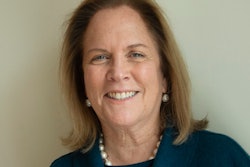Systemic racism and its role in the financial strangulation of many HBCUs has finally been exposed as a prominent thorn of injustice in America’s higher education system. Due to long-standing inequities and discriminatory funding practices, HBCUs have been left far behind in securing sustainable resources when compared with Predominately White Institutions (PWIs). Ironically, the survival of many HBCUs has been jeopardized by the same systemic racism that other colleges and universities are claiming to confront through diversity, equity, inclusion, and justice (JEDI) initiatives. The Biden Administration’s Build Back Better plan would be a significant step in beginning to repair the consequences of systemic racism in higher education, but whether or not Congressional support will be rallied remains to be seen.  Ashley Herr-Perrin
Ashley Herr-Perrin
JEDI isn’t a new phenomenon in the higher education world, but it has become an urgent expectation that colleges and universities have become accountable for addressing. While the particulars of JEDI objectives may vary based on institutional needs, the overarching goal is essentially twofold: to facilitate a culture of diversity, equity, and inclusion at the micro-level as well as enable social justice at the macro-level. The catchy JEDI acronym is the only newcomer to this concept though, as HBCUs have been JEDI masters existing in plain sight all along. Because an HBCU designation is only possible for predominately Black colleges and universities that were founded before 1964, this means that at minimum, there are nearly 60 years of JEDI experience at the youngest of HBCUs. In the case of schools such as Cheyney University (founded in 1837) and Lincoln University (founded in 1854), this experience has quantified over 180 years.
HBCUs were created to provide Black Americans with access to education (including primary, secondary, and postsecondary in the earlier years) as they were shunned from white institutions. Civil servants, pioneers in STEM fields, authors, celebrities, civil rights activists, and philanthropists are just a few of examples of HBCU alumni that have greatly impacted society. HBCUs have also educated a large portion of the teachers, lawyers, engineers, and other professionals who obtained the social and economic mobility that established the Black middle and upper classes in the United States. This legacy continues. For example, the U.S. Department of Education confirms that 75% of all Black students who are recipients of doctoral degrees received an undergraduate education at an HBCU. Bennett College, only one of two HBCUs for women, is another example as it is currently ranked #1 on the U.S. News and World Report Social Mobility for National Liberal Arts Colleges list.
HBCUs also enroll a disproportionate amount of low-income, first-generation college students when compared with PWIs. Individuals from all demographics attend HBCUs, but it is estimated that 75% of HBCU students come from low-income circumstances. Many other colleges and universities are grappling with how to increase equity in enrollment but still benefit from the privileges that more wealthy students are able to maintain. Promising equity may also require sacrificing some popular metrics of student success, such as retention or the average time it takes for degree completion. These very metrics, which are often interpreted out of context, have been a source of perceived negativity against HBCUs in spite of their JEDI outcomes. Acceptance of potentially compromised metrics in the name of moral responsibility is a commitment that PWIs may be reluctant to make.















